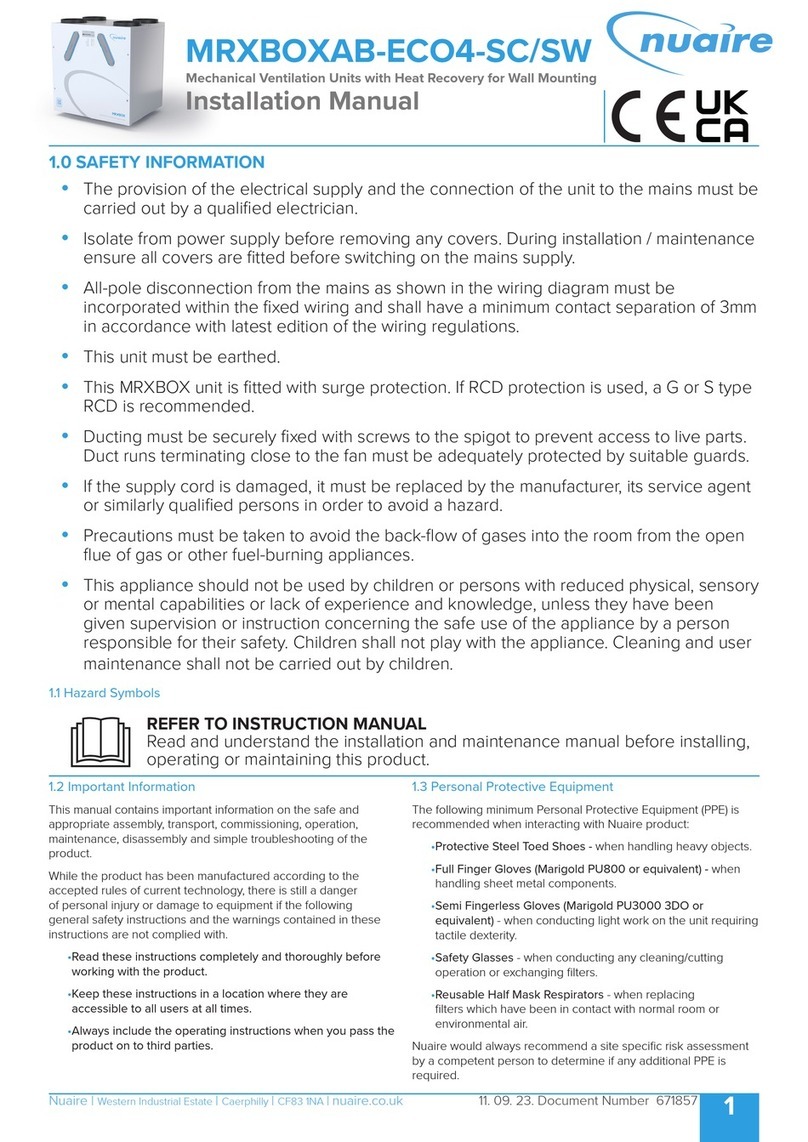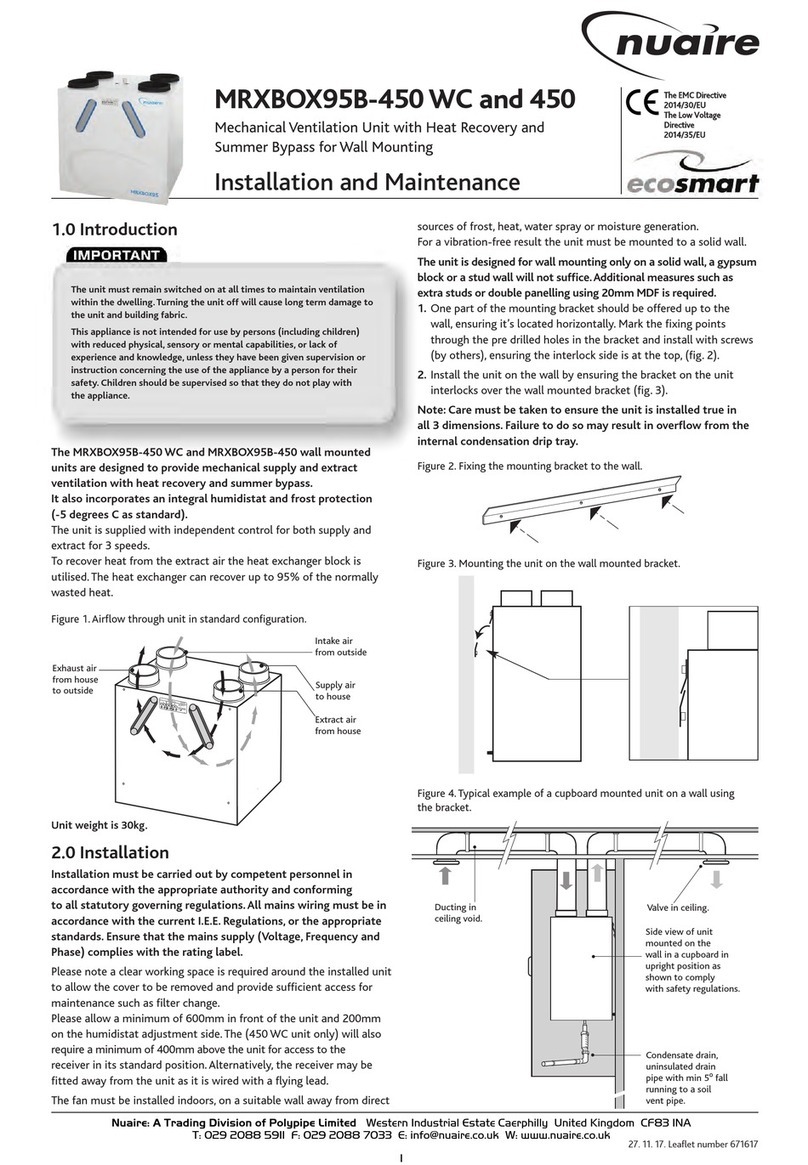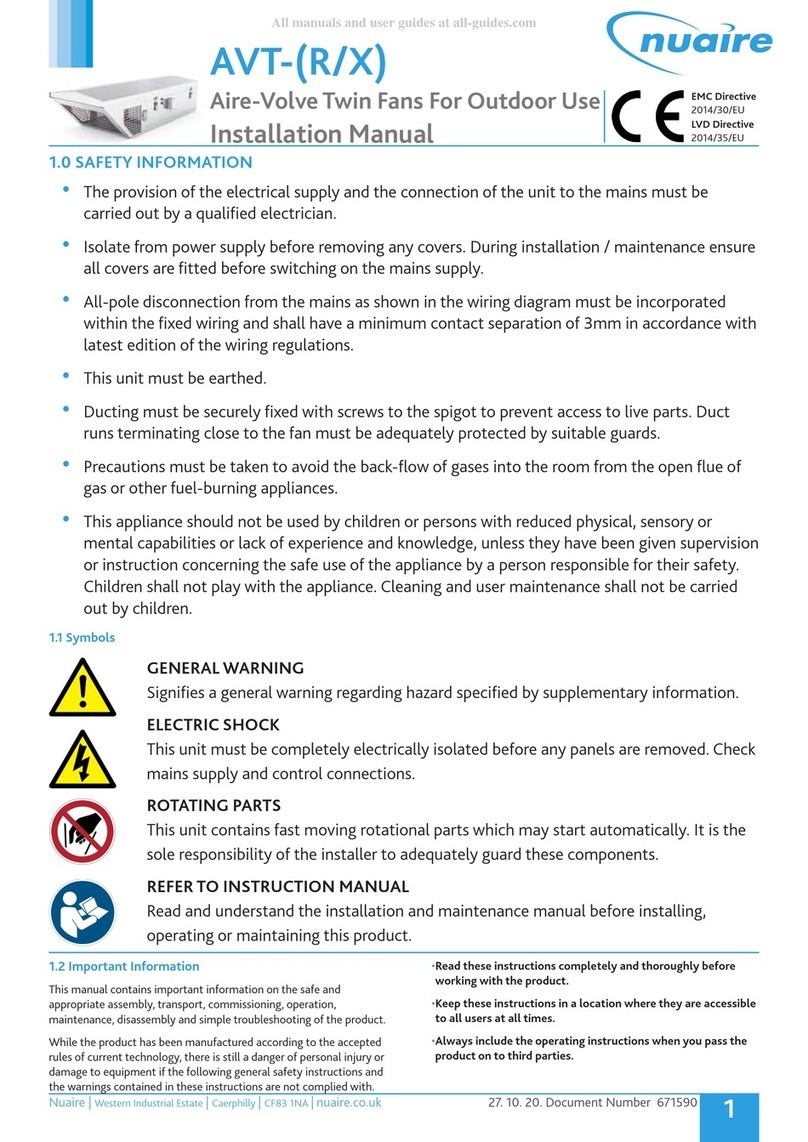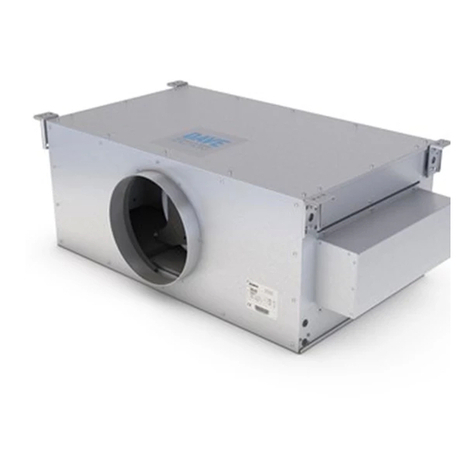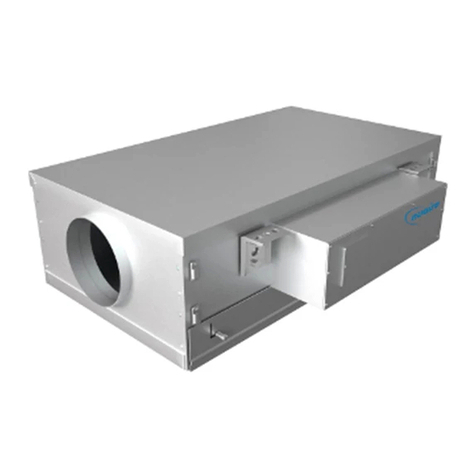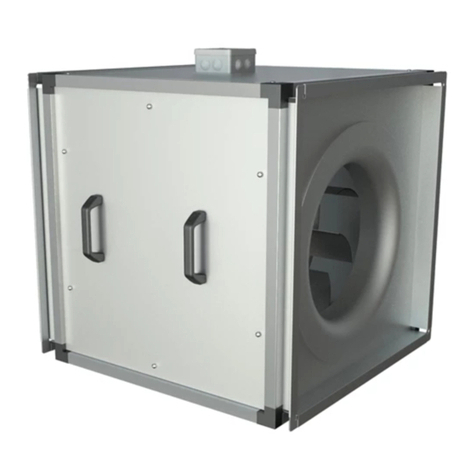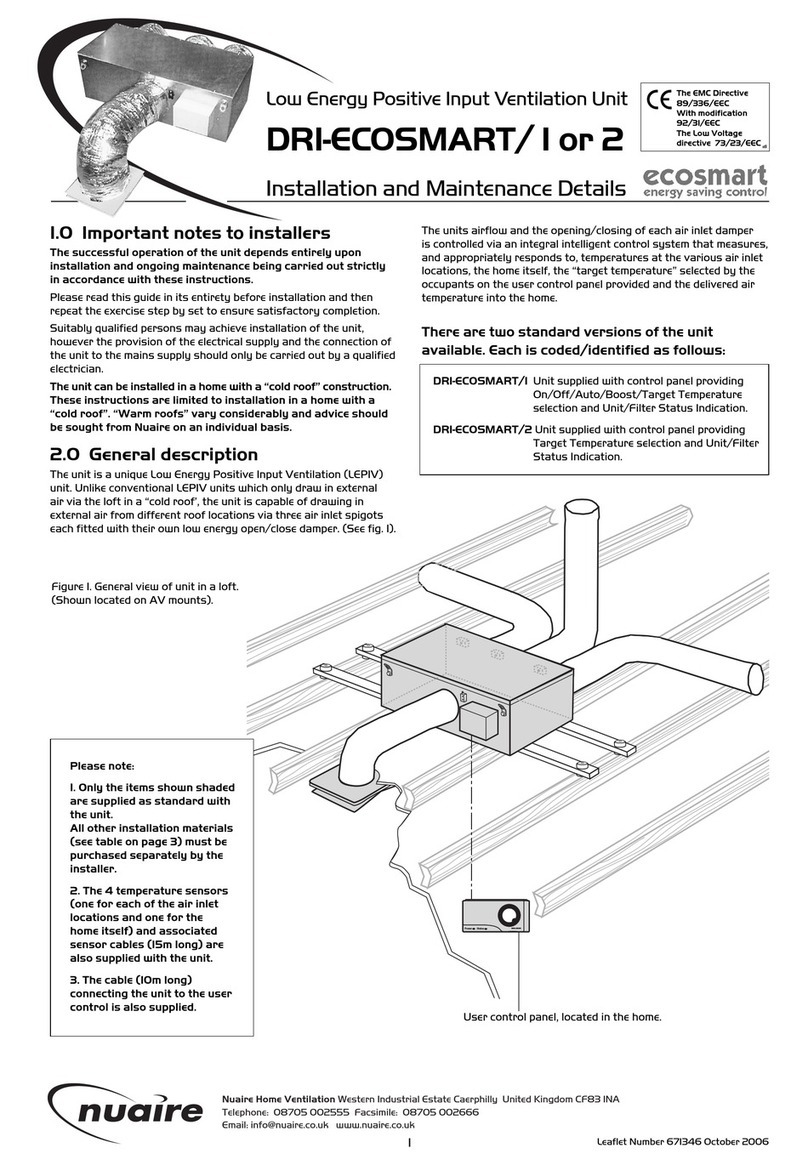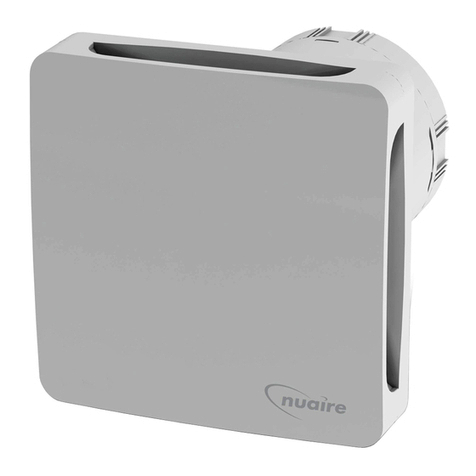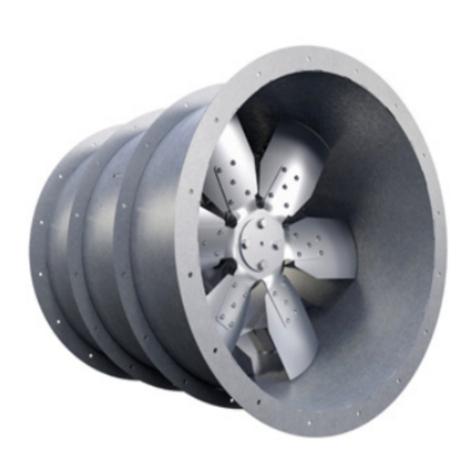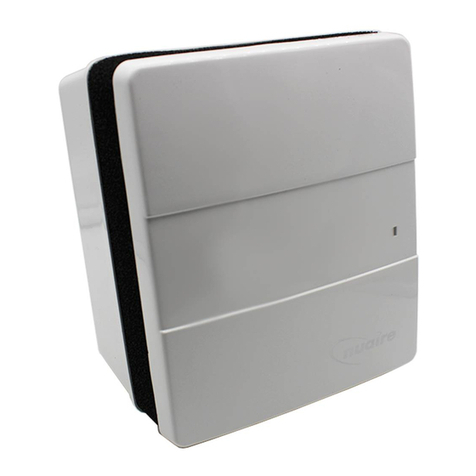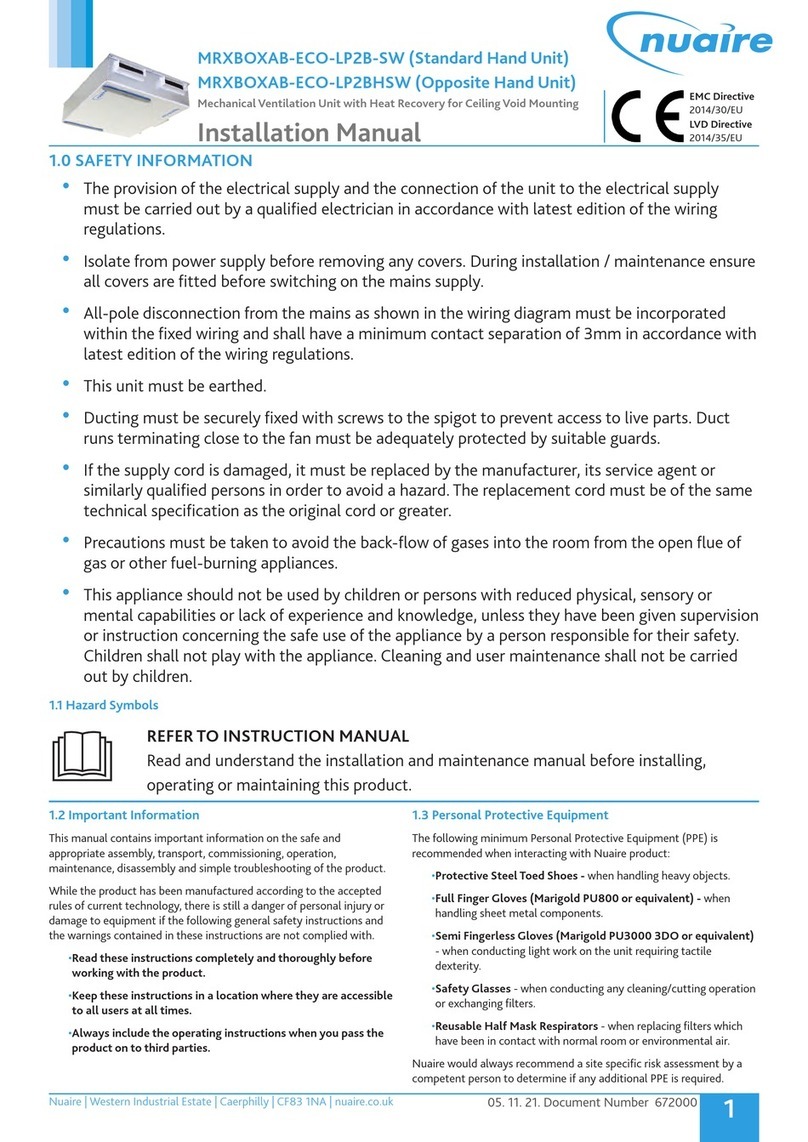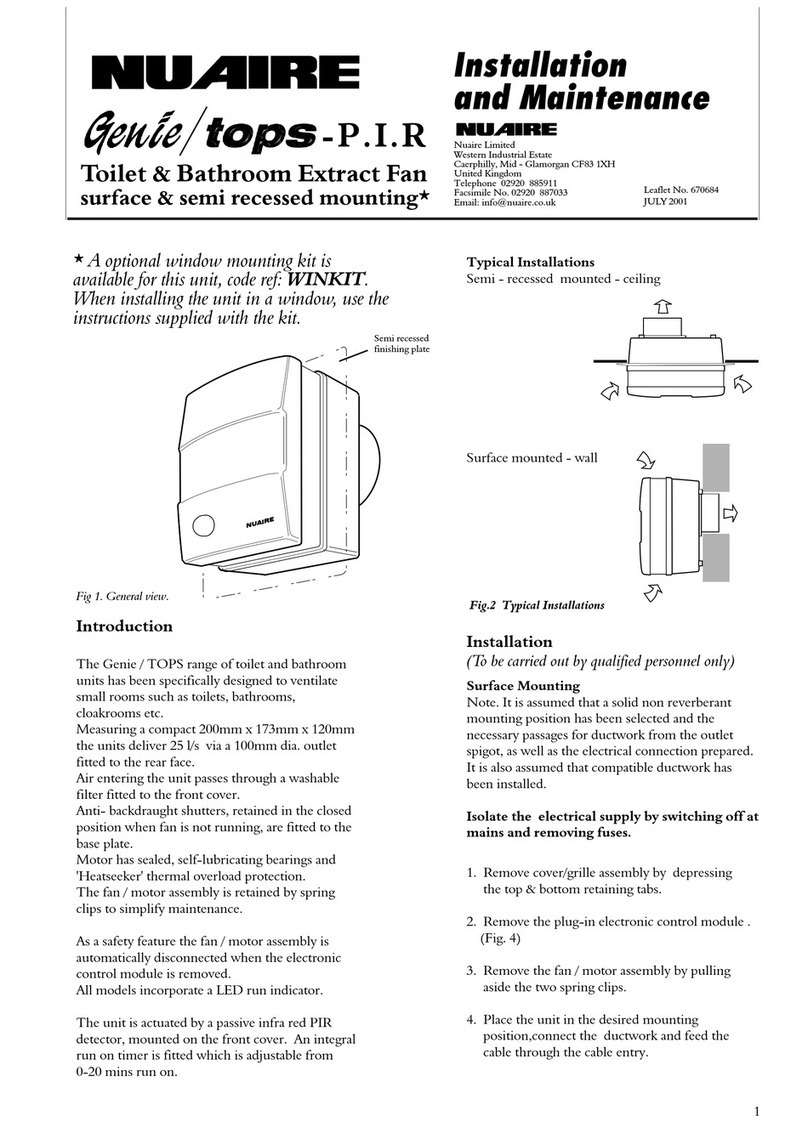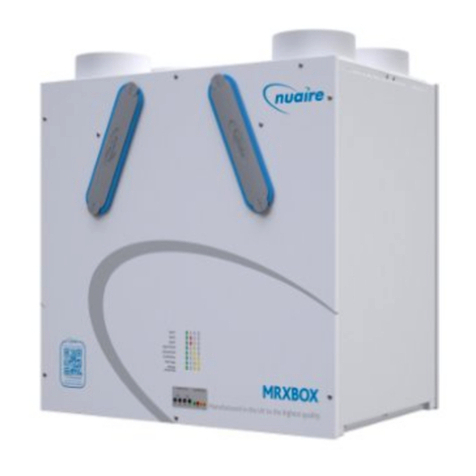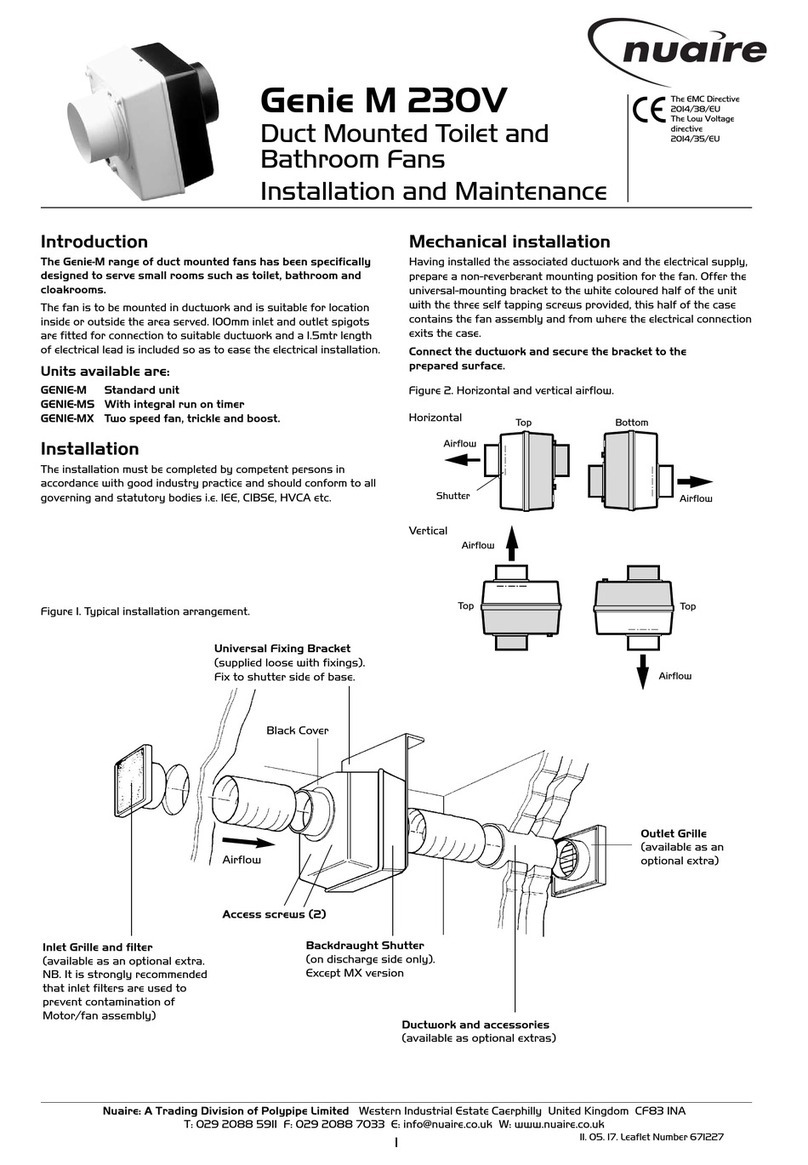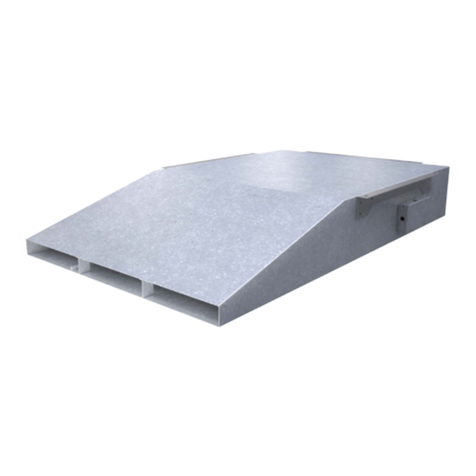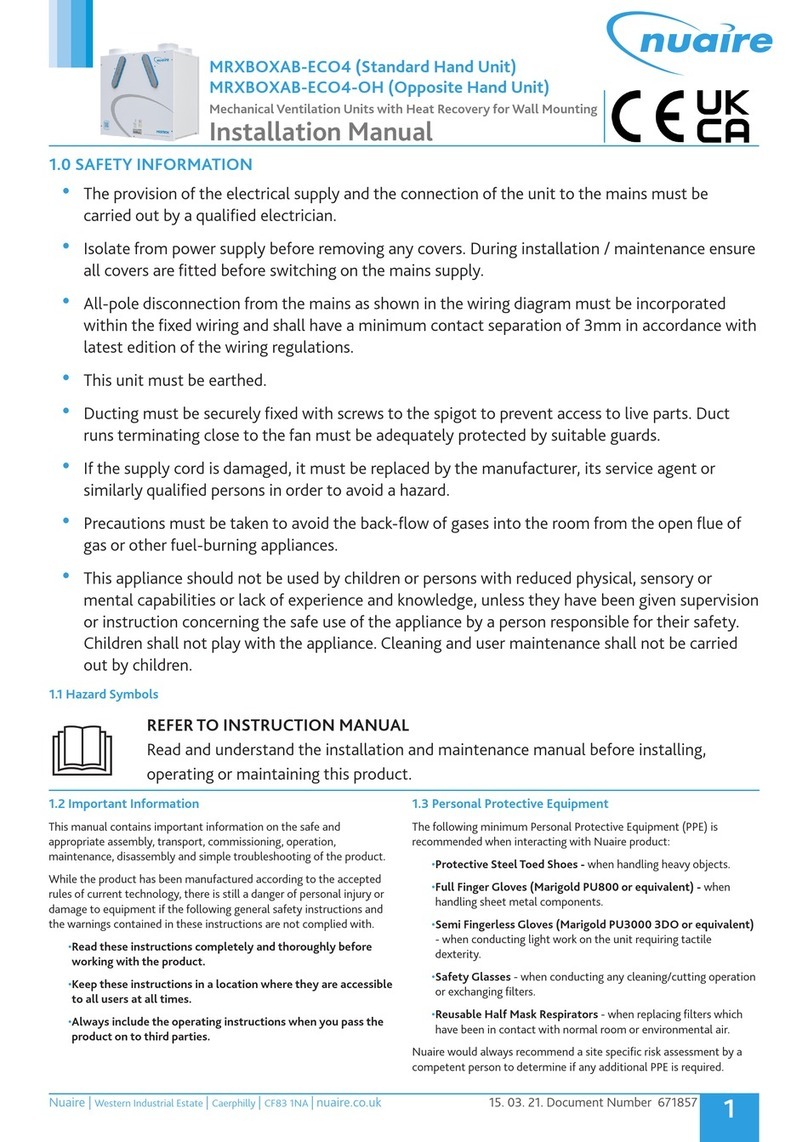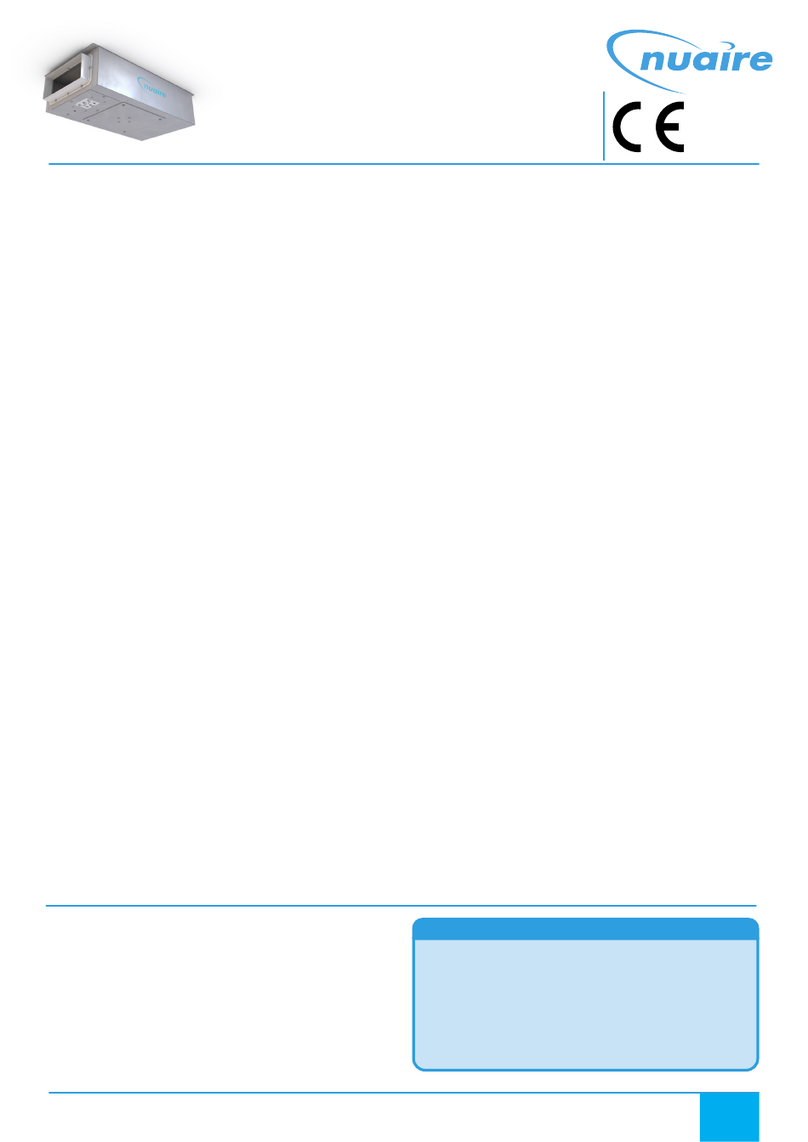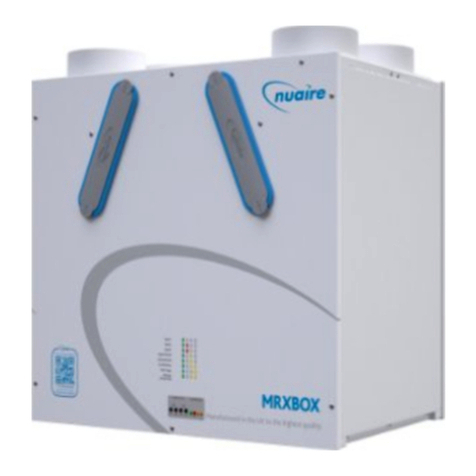
7
nuaire.co.uk 029 2085 8400 19. 08. 19. Leaflet Number 671795
Installation and Maintenance The ECO2 Wall Mounted Range of Units
Humidity
adjustment.
(AB unit only).
Speed 2
Speed 1 Speed 2
Speed 1
6.0 Commissioning
IMPORTANT
The filters fitted inside the unit are protected with a plastic film.
Prior to commissioning remove the covers (figs. 15 & 16), take off the
film and replace.
1. For the required air flow rates please refer to the design specification
for the property, follow 2.4, or refer to building regulations ADF
2010.
2. The unit is supplied with independent control for both normal and
boost airflows (see fig. 19).
3. Correct commissioning is essential to ensure the ventilation air flow
rates are met. It also ensures the unit is not over ventilating and
causing excessive power consumption.
4. Commissioning should be carried out in accordance with building
regulations document “Domestic ventilation compliance guide”.
www.planningportal.gov.uk/building regulations/approved
documents/partf/associated
A calibrated moving vane anemometer and hood will be required to
carry out commissioning.
5. Adjustment valves should be locked in place to prevent further
adjustment.
6. Once commissioned the home owner / tenant should be informed
that the unit should not be adjusted as it will have a detrimental
effect on the indoor air quality and could result in condensation and
mould growth. The clear panel covering the control has an adhesive
panel which should be exposed and sealed post commissioning to
prevent tampering.
7. Speed 1 is limited to never exceed speed 2, when commissioning
speed 2 should always be set first.
Figure 19. Detail of unit control
on front panel
(standard configuration only).
6.1 Speed 3
The unit has the ability to override both speed 1 and speed 2 to operate
the fan to maximum airflow. See wiring diagram for details of operating
this facility.
6.2 Humidity adjustment (AB unit only).
This product contains an internal humidity sensor fitted into the air-
flow extracting from the wet rooms. When the unit senses that the
humidity exceeds the set point the unit will boost to that set by the
commissioned boost speed. The set point can be found on the front
of the unit (see fig. 19) and is at its least sensitive when turned fully
clockwise. Note that the sensor is measuring humidity from all the wet
rooms at the same time and should not be relied on to solely boost
the unit. Additional switch should be used local to the wet rooms (see
wiring diagrams).
7.0 Status Indication
The status of the unit is indicated by a series of LED’s on the front cover.
The variants are listed below.
Note: The display on the unit control panel will not indicate when a
higher speed setting has been triggered by an external source, such
as an ES-PIR2 etc.
HX Bypass
Speed 1
Speed 2
Speed 3
Supply Fan Fault
Extract Fan Fault
Frost Protection
Filter Change
8.0 Integral automatic HX bypass (AB units only)
Intake and extract temperatures are monitored at the point the
airflows enter the unit, if the range falls within the set parameters the
bypass damper is opened automatically to target an indoor comfort
temperature all year round.
Note: The extract temperature is an average from all wet rooms. If
this exceeds 25°C the unit may go into bypass depending on outside
temperatures.
8.1 Thermal Bypass (Non AB models)
In the event of excessive outside temperatures, and to help prevent
over-heating, the supply fan will automatically reduce to a trickle
speed. Under these circumstances additional ventilation measures may
be required e.g. open windows or trickle vents (if fitted).
8.2 Frost Protection
In the event of the intake air temperature at the unit dropping below
the predetermined set point (-5° C as standard) the supply fan will
reduce to minimum speed, once the temperature rises above the set
point the fan will return to its commissioned speed.
Please note this mode will only activate after ten days of continuous
run time. If commissioning of the unit is outside of this timeframe
please notify the after sales department prior to site visit.
Nuaire recommend that filters are inspected every 6 months and
replaced every 12 months. A flashing LED (Section 7.0) will indicate that
a filter change is required. This indication repeats every 12 months and
will turn off automatically after 5 Days.
Remove the filter covers on the front panel of the unit by gripping the
two circular tabs either end of the filter covers and pulling away from
the unit. The filter can now be extracted by pulling the removal loop on
the front edge of the filter. Once the filters have been inspected return
or replace them as necessary.
Inspect the heat exchanger every 5 years. Generally check for damage
and security of components. Refit cover.
9.0 Maintenance
IMPORTANT
Isolation - Before commencing work make sure that the unit,
switched live and Nuaire control are electrically isolated from the
mains supply and switched live supply.
